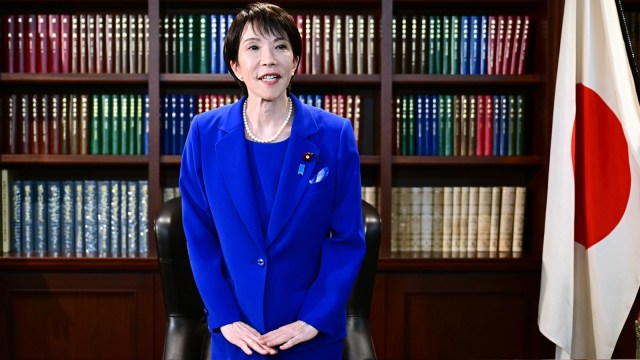
The election of Sanae Takaichi as Japan’s first female prime minister could be a pivotal moment for India–Japan relations. She is the protégé of Abe Shinzo but she has never been to India. Under Takaichi’s leadership, India–Japan ties are expected to flourish in areas ranging from infrastructure and defence to human capital development and regional engagement across the Indo-Pacific and Africa.
A key focus of this partnership is the emerging Japan–India–Indian Ocean Region–Africa initiative, which aims to integrate security, trade, technology, and human capital development across strategic nodes. Japan has initiated dialogues with India and Indian Ocean states on maritime security, anti-piracy operations, and regional surveillance, while India’s naval capabilities enable Japan to extend its presence safely across critical sea lanes. The collaboration is expected to include joint naval exercises, maritime domain awareness networks, and technology transfers for coastal surveillance.
Japan’s official development assistance and concessional financing can catalyse infrastructure projects in Africa and the Indian Ocean, while India contributes technical expertise to implement ports, rail links, and logistics hubs. Triangular cooperation combining Japan’s capital, India’s project management, and African host-country engagement has the potential to create transformative economic corridors.
African nations are actively developing ports and industrial clusters along the Indian Ocean, and India and Japan are exploring co-investments in industrial parks, smart ports, and logistics hubs, creating trade corridors that connect Africa and Asia. This approach enhances supply chain resilience, increases access to raw materials, and strengthens bilateral trade flows. Japan’s advanced technologies in digital infrastructure, green energy, artificial intelligence, and manufacturing complement India’s human capital. Joint programmes aim to train local workforces, foster technology transfer, and support startups in strategic sectors.
With energy and climate challenges growing in Africa and the Indian Ocean region, collaborative initiatives in green hydrogen, solar, and wind energy, along with climate-resilient infrastructure and sustainable fisheries, are expected to play an increasing role. These could be part of Japan’s enhanced FDI into India and then connect to the IOR and Africa.
The India–Japan Human Resource partnership is another significant area of progress. Launched in 2025, the Action Plan targets the exchange of over 500,000 individuals in five years, including 50,000 skilled Indian professionals moving to Japan. The partnership addresses labour shortages in sectors such as IT, engineering, and healthcare, while educational programmes promote Japanese language learning and facilitate student and researcher exchanges.
Collaborative training initiatives at institutions like IIM Nagpur, in partnership with Japanese firms such as Suzuki, equip students with practical business and technical skills. State-level programmes like Assam’s FLIGHT scheme provide Japanese language training to thousands of youths, enabling employment opportunities in Japan. These programmes foster joint research, technology commercialisation, and people-to-people engagement, strengthening the foundation of bilateral economic and cultural ties. These require institutional follow-up.
Infrastructure projects form another pillar of the India–Japan partnership. The Mumbai–Ahmedabad High-Speed Rail corridor, using Japanese Shinkansen technology, will dramatically reduce travel times and enhance India’s rail capabilities. The Gujarat section has achieved near-complete land acquisition, with significant civil works such as viaducts and piers already finished. Japan is conducting trials of Shinkansen train sets, while India will integrate and operate future fleets.
Institutional frameworks and financing through JICA are in place, though challenges remain in full system integration, Maharashtra section delays, and complex engineering works. Despite these hurdles, the project represents a milestone in India–Japan technological cooperation. This requires attention so that it becomes a lighthouse for India–Japan success stories in infrastructure as Maruti was in manufacturing,
The Delhi–Mumbai Industrial Corridor is another transformative initiative, linking India’s capital region with its financial hub over 1,500 kilometres. Anchored by the Western Dedicated Freight Corridor, DMIC enhances manufacturing, logistics, and urbanisation. Several industrial nodes, including Dholera and Greater Noida, are operational, with infrastructure in place and investor interest growing. The corridor benefits from multi-state participation, a strong logistics backbone, and government prioritisation, although land acquisition delays, uneven implementation, and coordination challenges persist. While the full corridor is still a work in progress, DMIC should deliver tangible results soon.
Defence production cooperation could gain momentum, encompassing co-development and co-production of advanced military technologies. India and Japan are collaborating on projects ranging from Unicorn masts and could expand to stealth systems, naval platforms, unmanned vehicles, cyber defence, regional jets, and submarines.
Can Japan become part of India’s defence diversification programme? Annual summits and the Joint Working Group on Defence Equipment and Technology Cooperation facilitate research, development, and industry-to-industry collaboration. Bilateral exercises and strategic dialogues enhance interoperability and strengthen the Indo-Pacific security architecture, contributing to regional stability while diversifying supply chains and advancing technological capabilities.
Under Takaichi, India–Japan ties are expected to enter a strategic phase that could blend infrastructure, human capital, defence, and economic collaboration. Initiatives such as the Mumbai–Ahmedabad High-Speed Rail, the Delhi–Mumbai Industrial Corridor, defence co-production, and human resource partnerships reflect a comprehensive vision for regional integration, Indo-Pacific security, and Africa–India economic linkages. While challenges persist, including geopolitical competition, infrastructure gaps, and coordination complexities, the trajectory of cooperation points to a durable, multifaceted, and mutually beneficial partnership that will enhance innovation, economic growth, and regional stability across Asia and Africa.
The writer, a former diplomat, is author of The Mango Flavour: India & ASEAN After 10 years of the AEP